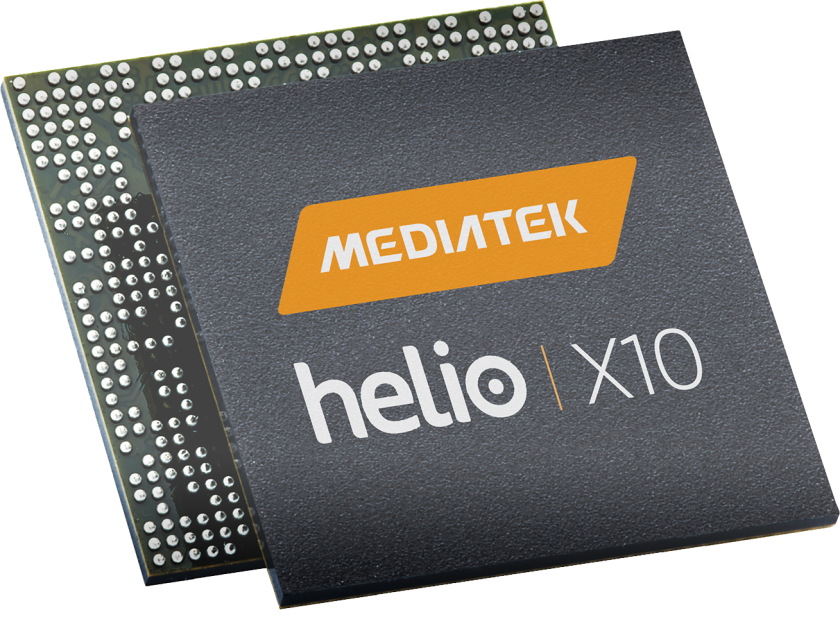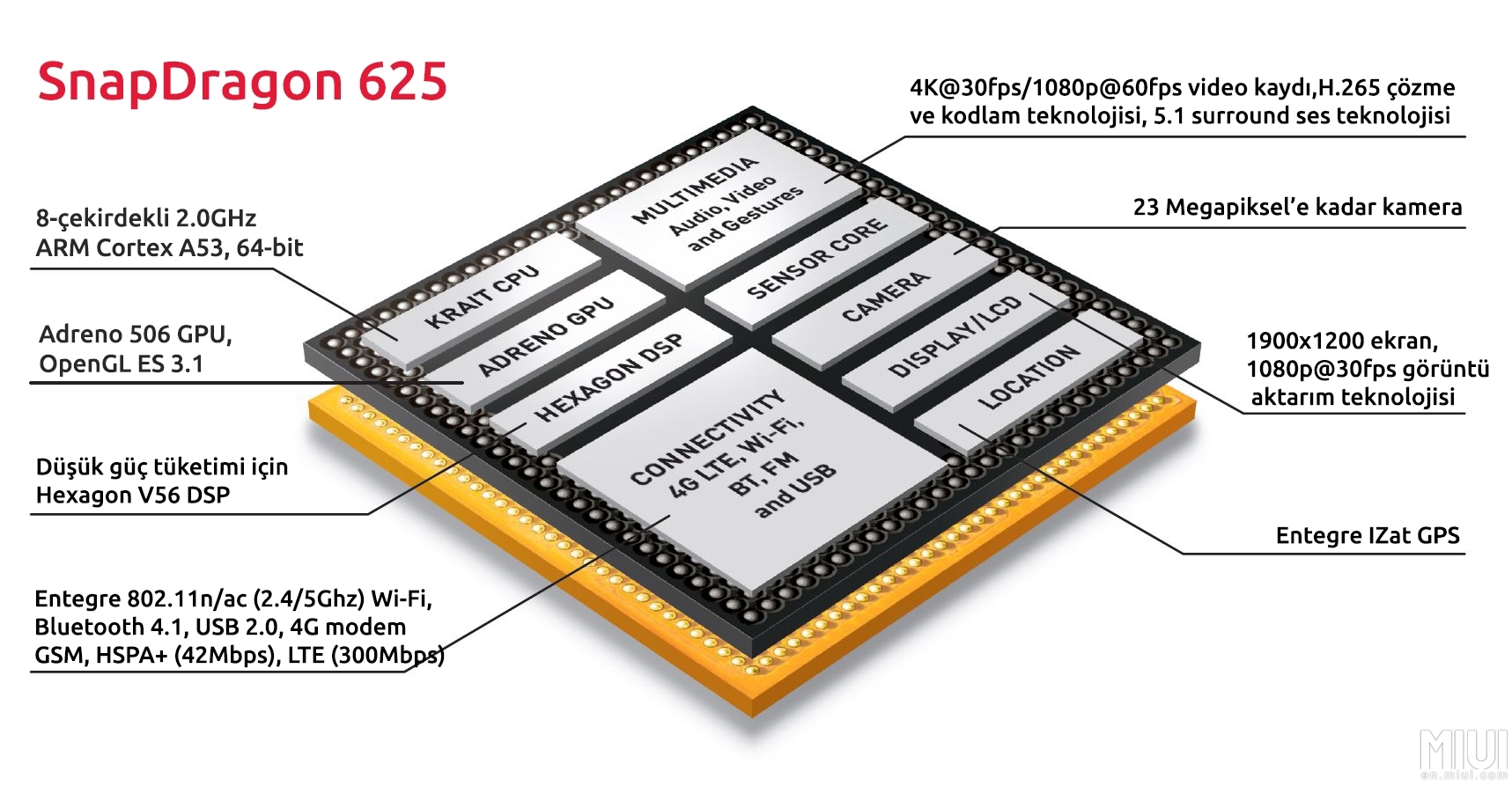Following the success of the Snapdragon 650, Qualcomm has released another mid-range SoC, the Snapdragon 625, the most widely used power-saving SoC, which Xiaomi has used in the Redmi Note 4, Mi5x, Mi Max 2 and Redmi 4 Prime. Meanwhile, Mediatek is going head-to-head with another SoC, the Helio X20, the first SoC to deliver serious performance with a three-cluster CPU architecture. You can find it in the Xiaomi Redmi Note 4, and the updated Helio X25 version in the Redmi Pro. Although both SoCs are last year's releases, it's worth comparing both.
Let's get started!
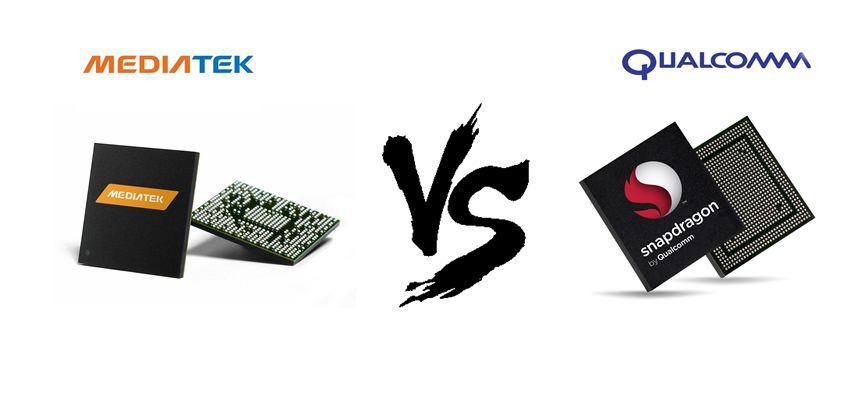
Briefly about Qualcomm and Mediatek:
You've probably heard of Qualcomm SoC. A world-renowned manufacturer, its processors are used by big names such as Samsung, Huawei, OnePlus, Xiaomi and many others. FYI, Qualcomm is an American semiconductor company based in San Diego, California. It has become the leading smartphone SoC (CPU + GPU + Modem + Board = System on Chip) supplier, with high quality X series modems, and Adreno GPUs. The best Qualcomm chips, like the Snapdragon 800/801 and 820/821, are widely used in flagship smartphones.
The Snapdragon chips have good battery life, thermal management, multitasking and gaming performance, but there have also been some "missteps" such as the Snapdragon 810 and 615 chips that have had a number of issues such as overheating, battery and performance problems. If Qualcomm wants to continue to be a dominant player, they should not make any more mistakes. They must strive to produce flawless processors. Recently, a series of censures and lawsuits have been filed against the manufacturer, which should be settled in the next period.
The Snapdragon 835 is the latest high-end SoC used by flagship devices such as the Samsung S8, LG V30, Xiaomi Mi6, and others. Qualcomm's goal is to make the new Octa-Core architecture (4xKryo 280 + 4xA53 CPU core on 10nm node, equipped with 1Gbit + LTE modem) widely available.
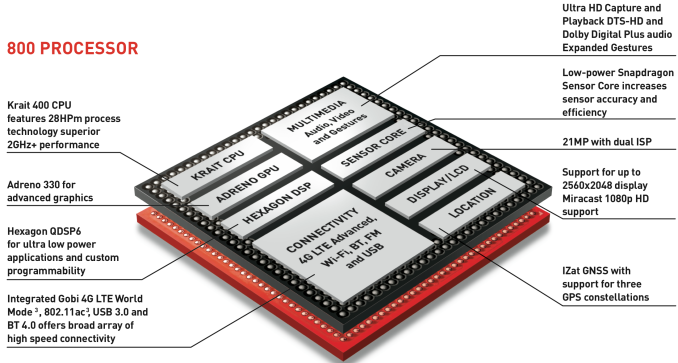
(Snapdragon 800, one of the best Qualcomm SoCs)
The Mediatek (MTK) a Taiwanese semiconductor company. Its SoCs are widely used by smartphone manufacturers such as Xiaomi (previous models), Meizu, Vivo and Oppo. Mediatek aims to produce faster and more cost-effective chips, such as the famous Helio X10 and MT6752. MTK was the first to introduce the Octa-Core/8 CPU Core SoC (MT6592) and the Deca-Core/10 CPU Core (Helio X20) chips.
Unfortunately, Mediatek doesn't have a very good reputation lately, because their chips consume a lot more power and have more problems compared to Snapdragon chips. However, this negative bias is also due to the fact that many smaller manufacturers also use MTK SoCs in their entry, mid, and upper-range products, which usually don't get proper optimization and later neglect support.
Quality smartphone manufacturers such as Xiaomi, Meizu, Vivo and Oppo with MTK chips are not a big problem at all, which proves the above.
With the Helio X30 processor, Mediatek is in a serious fight to compete with Qualcomm's Snapdragon 835. To do this, it uses the new A73 cores for performance and the smaller A35 for efficiency while also featuring the PowerVR 7XT GPU found in the iPhone 7, a 10nm node, and a much better modem.
(Helio X10, one of the best Mediatek SoCs)
CPU
The Qulacomm Snapdragon 625 consists of 8 A53 cores, scalable up to 2GHz. The setup is slightly different from the Snapdragon 650. Instead of using two large A72 cores, Qualcomm has opted to spread out all the A53 cores in the Snapdragon 625 across multiple locations, which make for a more optimized, good impact on battery life while also compensating for performance.
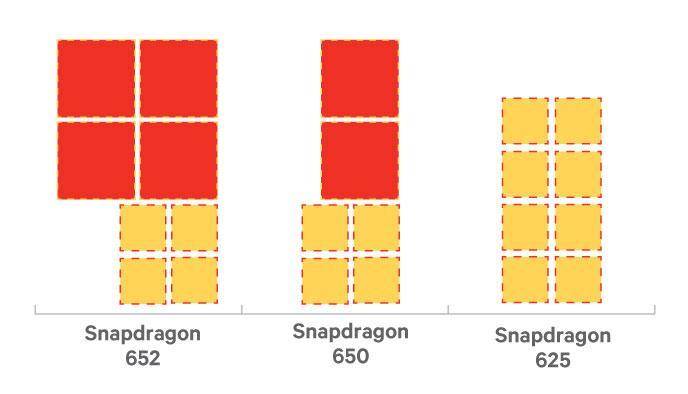 This type of configuration consumes less power and increases energy efficiency thanks to a good distribution of cores.
This type of configuration consumes less power and increases energy efficiency thanks to a good distribution of cores.
In terms of performance, the A72 core will be faster than the A53 core, although the clock speed of the A72 core is lower than the A53 core.
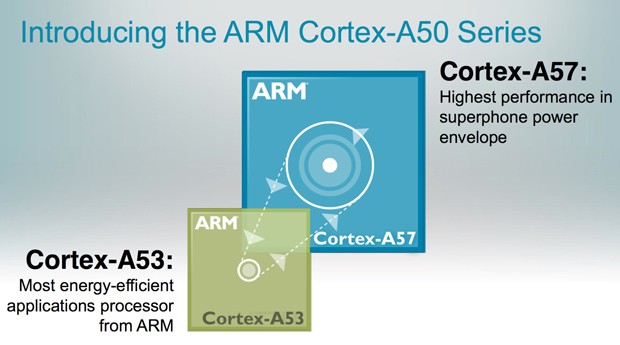
The Mediatek Helio X20 is equipped with 2 large A72 cores, with a clock speed of 2.1 GHz, which is very important compared to the single-core performance, you can see the advantages of comparing the A72 base with the older version.

The second combination consists of 4xA53 cores with clock speeds scalable up to 1.85 GHz. The A53 cores increase the space on the chip for OEMs to perform more useful functions (an A53 core is about four times smaller than an A73 type). The third combination uses the same A53 cores but with a lower clock speed of 1.4GHz.
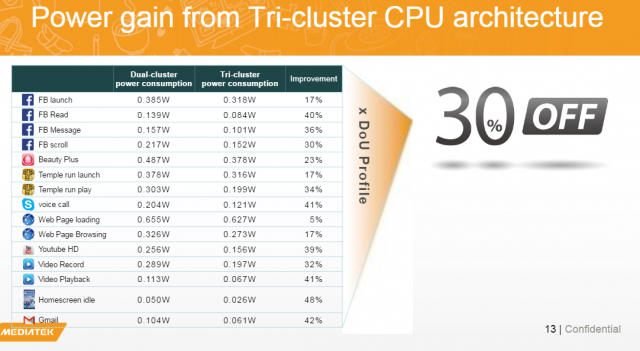
The Helio X20 SoC's first 10-core / Tri-Cluster architecture, uses a completely new performance optimization compared to traditional two-cluster big.LITTLE solutions. Traditional 2-cluster designs typically always have lower performance CPU cores, such as ARM A53. This is coupled with a high performance cluster, or a larger CPU core, such as the A57/A72. The 3-cluster CPU duplicates the existing A53 cores. The end result is a 30% improvement in power consumption over big.LITTE.

Geekbench score:
Redmi Note 4 Qualcomm on the left and Redmi Note 4 MTK on the right.
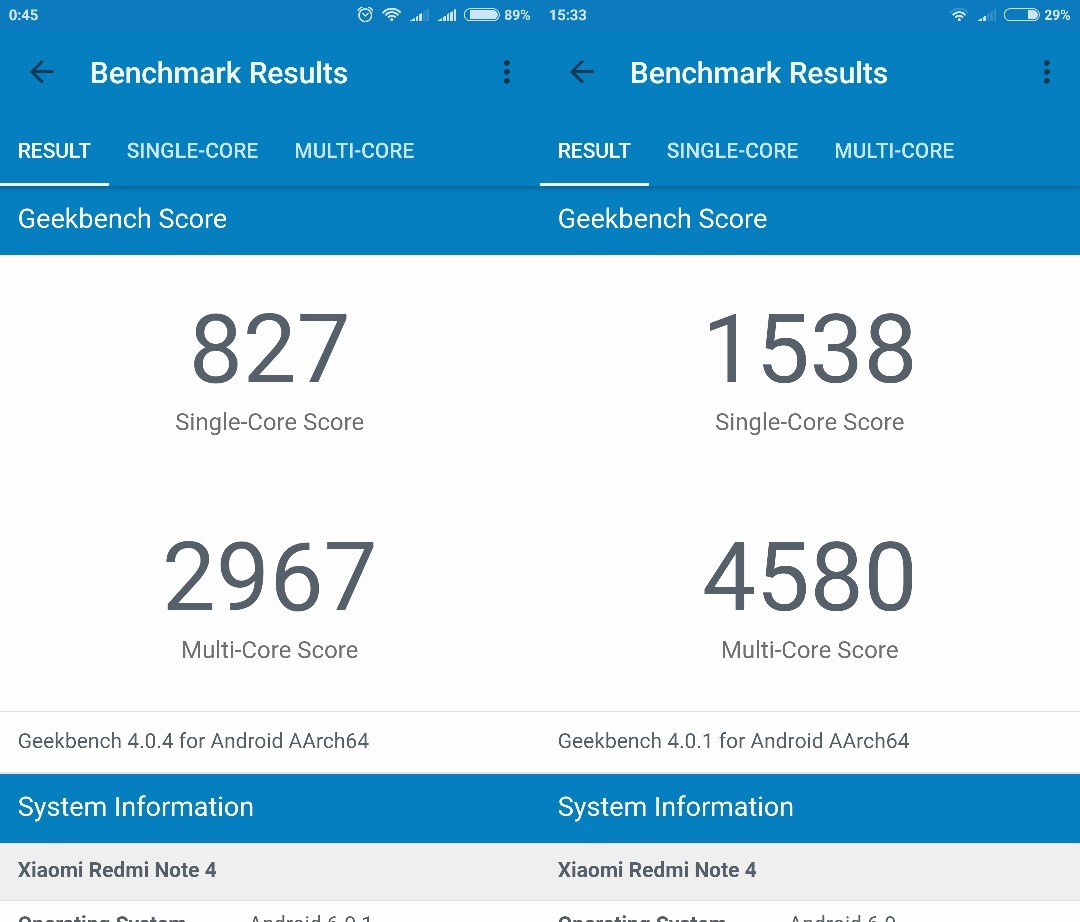
The Snapdragon 625 generally scores lower in both single and multi-threaded tests compared to the Helio X20. The benchmark is just a figure, the phone's performance still relies on our own usage, so we can't judge the phone's performance based on the benchmark score alone.
Size of the SoC
Using a smaller SoC improves performance and lowers power consumption. The 14nm Snapdragon 625 and Helio X20 with 20nm processor results in a smaller chip size, allowing OEMs to design with more usable space for other components. Larger batteries can be used or a slimmer design can be achieved with the size reduction. Continued improvements, combined with more advanced chip designs, are expected to significantly improve battery life.
Qualcomm Snapdragon 625

Mediatek Helio X20
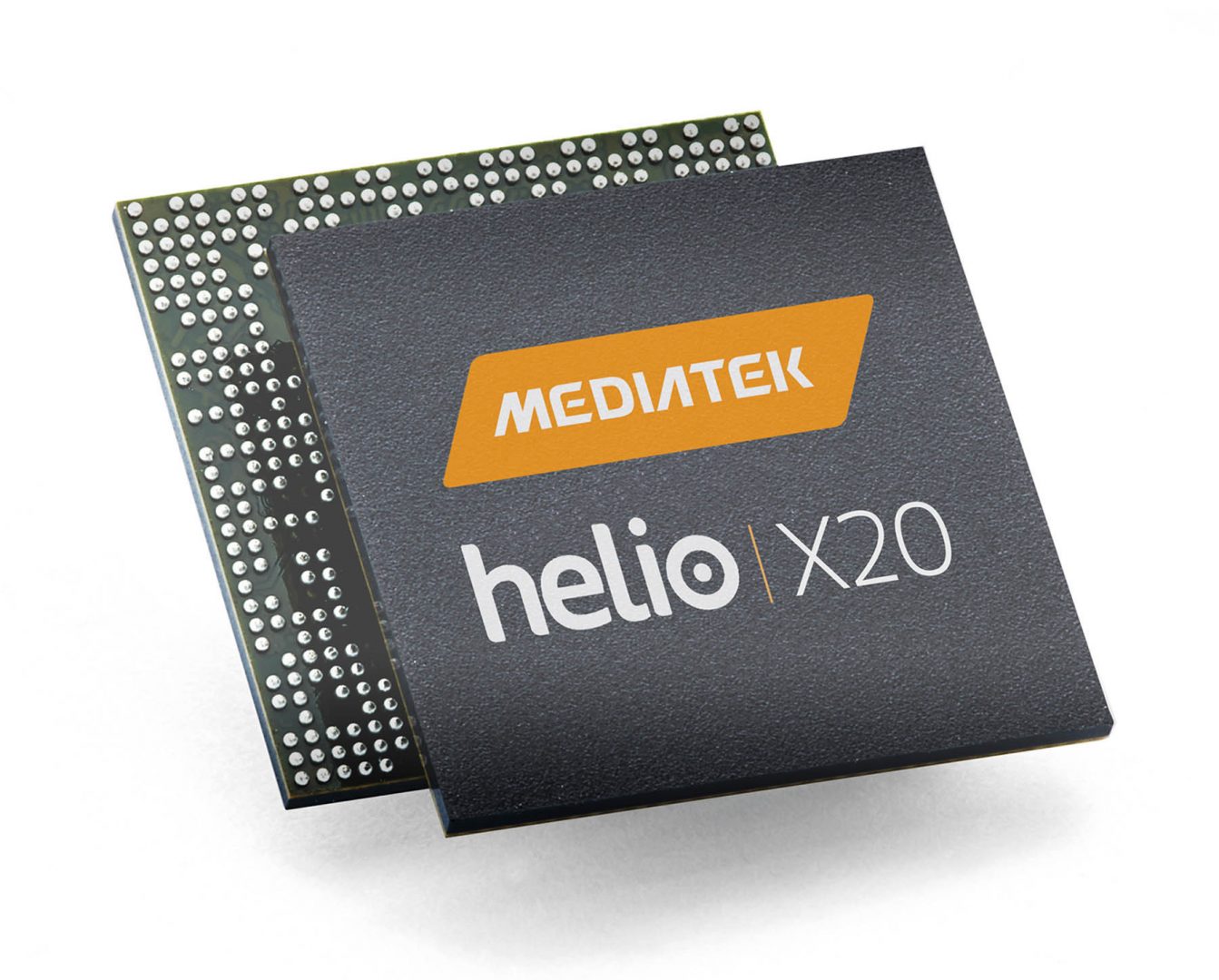
GPU
One of the strongest factors of Snapdragon chips is gaming performance. This is thanks to the higher-end Adreno graphics chip. It seems that the Adreno 506 is derived from the former great Adreno 505 from the Snadpragon 430/435, although the Adreno 510 in the Snapdragon 650 is not outstanding, but it supports perfectly most of the games without any noticeable lag.

The Helio X20 ARM Mali-T880MP4 graphics unit is scaled at 780 MHz. It supports OpenGL ES 3.1, OpenCL 1.2 and DirectX 11.2 (FL 11_2). The Mali-T880 can be extended with 1-16 clusters, where the MP4 version has 4 clusters/core. Thus, the Mali-T880MP4 provides sufficient performance for demanding Android games in FullHD quality, and uncompromised performance in high-resolution graphics games.
Mediatek has improved the GPU performance from the Helio X10, resulting in a GPU performance increase of 140%, and also scored higher than the Adreno 506 in all aspects of the benchmark test. The benchmark is just a data, we cannot judge the real life GPU performance, we only see the score.
Camera ISP
The dual ISP Snapdragon 625 supports a wide range of camera features such as optical image stabilisation, fast autofocus and dynamic range, along with more DSLR-like features. Up to 24 MP camera sensor supported.
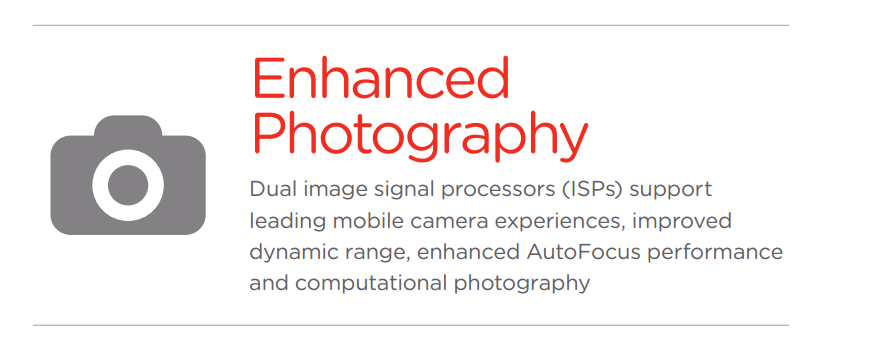
The Helio X20 supports dual cameras, colour and mono sensor, using Dual 14 Bit imagiq ISP. This multi-sensor design can capture up to three times the light of a conventional single-channel Bayer sensor, reducing image noise and increasing quality. The built-in 3D depth-sensing engine for deep-field processing, as well as multiple noise-canceling engines, all guarantee faster image processing and unprecedented detail and colour reproduction. Even in extreme conditions.
MODEM
Snapdragon 625 models support "X9 LTE". They support LTE-A carrier aggregation (2x20MHz) with maximum download speeds of up to 300Mbps (LTE Cat. 7) and 150Mbps maximum upload speeds (LTE Cat.13), as well as 64-QAM modulation for uplink. The SoC also supports enhanced voice service (EVS) codes for Ultra HD VoLTE calls.
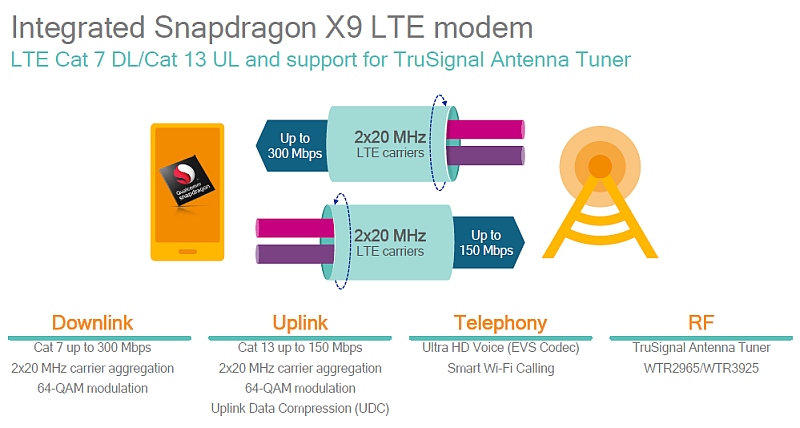
The Helio X20 enables LTE Release 11, Category 6 with 20+20MHz Carrier Aggregation (downstream) technology using the 4G LTE-Advanced WorldMode modem. Up to 300Mbps in the downstream direction and 50Mbps in the upstream direction. The new modem 30% consumes less power than the one in Helio X10.
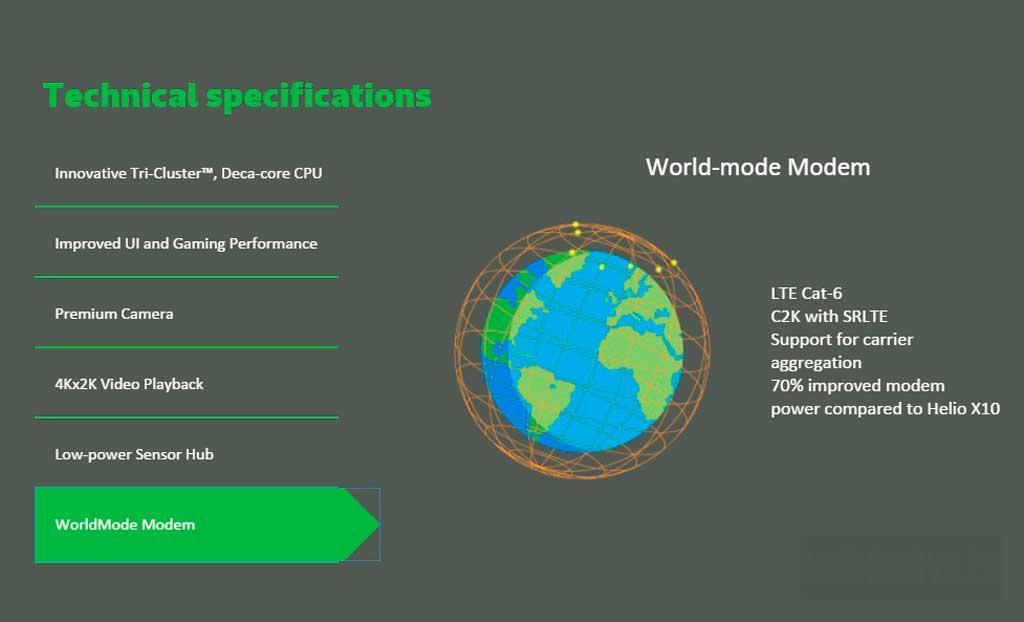
DSP
The Snapdragon 625 from Qualcomm® Hexagon™ 546 DSP. It is designed to significantly improve performance and battery life, and can handle heavy imaging and video processing tasks quickly and efficiently.

Helio X20 is powered by ARM® Cortex®-M4 is integrated into the processor, a high-performance embedded processor with DSP instructions designed to handle digital signal control addressing that requires efficient, easy-to-use control and signal processing capabilities. The processor is highly configurable, enabling a wide range of applications requiring floating-point operation, memory protection and powerful tracking technology for cost-sensitive devices requiring minimal area.

System Administrator / Task Scheduler
Unfortunately, the Snapdragon 625 does not have any system manager, there is no information about it. Maybe it supports it, but Qualcomm is silent about it. For the Qualcomm Snapdragon 835, it has a system manager called Qualcomm Symphony Sytem Manager.
MediaTek Helio X20 uses CorePilot 3.0, which monitors CPU frequency and schedules tasks. Optimized for a unique tri-cluster CPU configuration, CorePilot monitors SoC power management while monitoring temperature. The global task scheduler component is responsible for moving tasks based on workload and user experience parameters such as frames per second. It also adjusts the processor frequency using Fast DVFS technology, which increases sampling rate, enabling faster voltage/frequency adjustments that better track changes in workload. The overall goal of CorePilot 3.0 is to achieve the best possible performance at the lowest possible power.
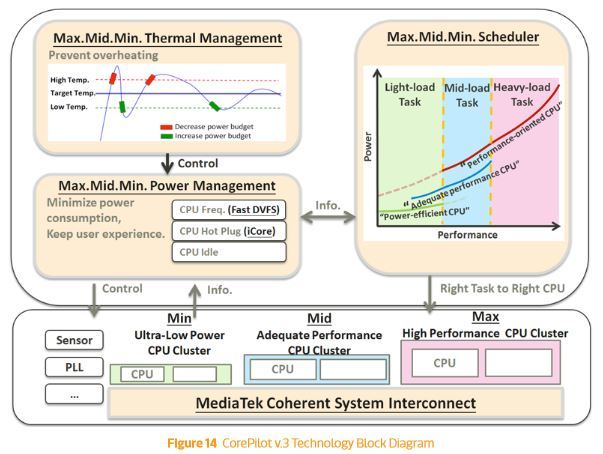
Audio codes
Qualcomm's Fluence HD Noise Cancelation technology combined with Snapdragon 625 supports an audiophile-quality DAC with 24-bit/192 KHz playback. In addition, echo and background noise cancellation can be effectively handled by the DSP.
Mediatek did not say what codecs the Helio X20 uses, but confirmed that the sound quality is 110 dB SNR and -95 THD. In addition, the audio content sampling rate is 8kHz-192kHz, while the audio content sampling format is 8-bit/16-bit/24-bit Mono/Stereo
Memory and flash memory
In addition to the new and improved CPU, DSP and GPU cores, the Qualcomm Snapdragon 625 supports fast LPDDR3 (random access) memory at 933 MHz clock speed. The Snapdragon 625 also supports SD 3.0 and eMMC 5.1 storage types.
The Helio X20 is up to 50% more power efficient than the previous generation LPDDR2 technology using LPDDR3 flash memory, while delivering up to 50% more performance. Helio X20 supports eMMC 5.1 only. It's a bit disappointing that none of the SoCs support UFS, but since these are not high-end SoCs, eMMC 5.1 is enough.

Summary
Qualcomm Snapdragon 625
Sources:
- https://www.mediatek.com/products/smartphones/mt6797-helio-x20
- https://www.qualcomm.com/products/snapdragon/processors/625
- http://www.anandtech.com/show/9227/mediatek-helio-x20
Which processor would you choose?







![[148] HyperOS heti hibajelentés](https://helloxiaomi.hu/wp-content/uploads/2024/04/hyperosbugreport148-218x150.webp)


![[42. Hét] HyperOS globál ROM változások](https://helloxiaomi.hu/wp-content/uploads/2024/03/hyperoschangelogindex1080-218x150.webp)
![[40. Hét] HyperOS globál ROM változások](https://helloxiaomi.hu/wp-content/uploads/2024/03/hyperoschangelogindex-218x150.webp)










